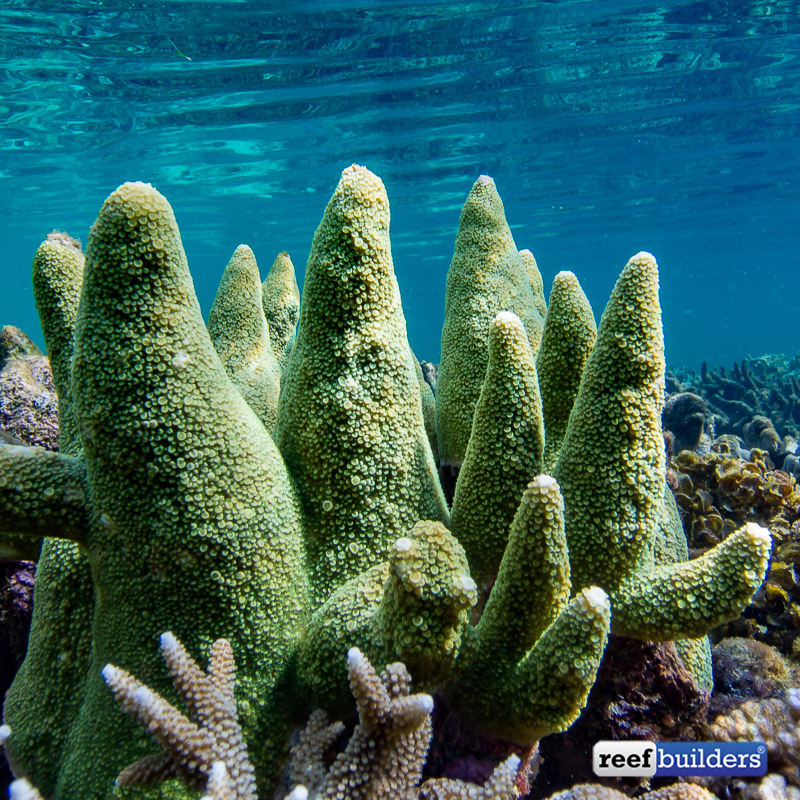Acropora pinguis is a very special coral that we’ve never seen in the aquarium hobby, and there’s probably very good reason for that. If you discount staghorn corals of the Isopora genus, the big cat’s paw corals, then Acropora pinguis forms the thickest, conical branches of any species of Acropora.
We’ve travelled to tropical coral reefs of many different ecoregions around the world, and seen huge acropora colonies of all different species. In fact we even seek out the huge staghorn colonies, because the sight of a huge, thick branching Acropora never ceases to amaze us, regardless of color.

There are huge elkhorn corals in Puerto Rico, staghorn cathedrals in the Marshall Islands, fractal Acropora monticulosa in the Philippines. But it wasn’t until we visited Raja Ampat in western Indonesia that we finally got to see some nice representatives of Acropora pinguis.
The huge conical branches of Acropora pinguis are hard to mistake for any other species. Mature colonies develop huge stout cinder cone-shaped branches with a thick encrusting base, and tightly clustered radial corralites all along the sides. The stout appearance of Acropora pinguis branches are more like tapering columns, which branch very infrequently, and then mostly at the base of the colony.


Younger colonies of Acropora pinguis actually can show a much more staghorn-like appearance, with thick branches that somewhat resemble Acropora robusta or Acropora abrotanoides. Thankfully, in the shallow, wave-washed environments where A. pinguis is found it is common to also see these related species of thick branching Acros growing in close proximity, and therefore easy to compare and contrast them growing alongside each other.

In the extremely shallow, nearshore habitat where Acropora pinguis grows, the species is often exposed to intense wave action, very warm temperature, and added sedimentation from being so close to land. This could be described as a marginal coral environment so it is no surprise that many specimens of Acropora pinguis are encrusting remnants of their former selves, always trying to grow back to a time of former glory.
It’s hard to say how common Acropora pinguis is in the wild, but finding a nice, photogenic colony has been hard, which is why we never saw a really great colony to share with you until we visited Raja Ampat. By now you’ve realized that the jumbo size and massive flow and light requirements is most of the reason we’ve not really seen or recognized this species in reef aquariums. This is precisely why we travel to exotic natural reefs and try and track down these unseen corals that may not be the most desirable to grow at home, but still are very interesting to see and learn about in the wild.





